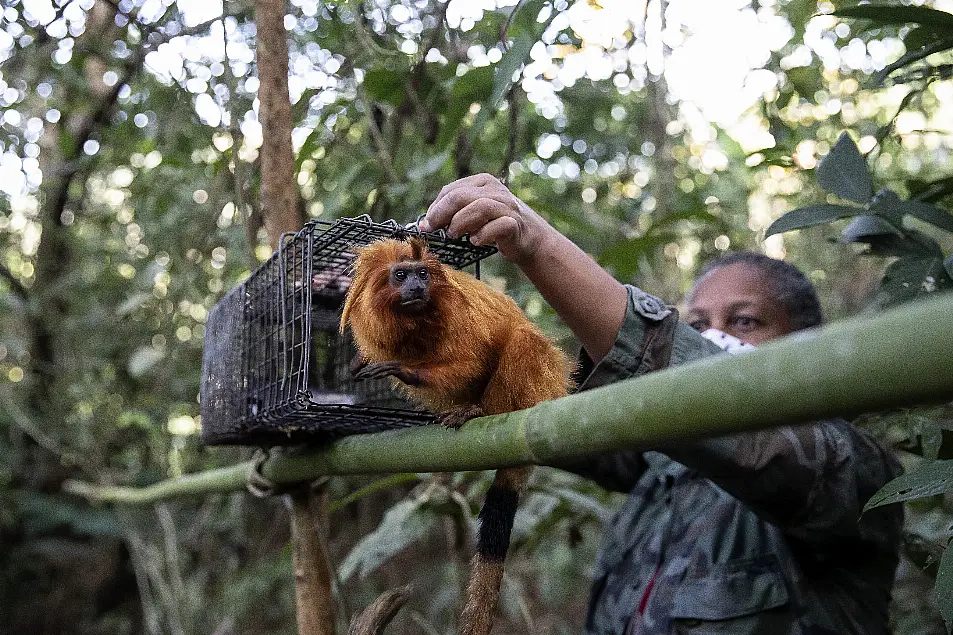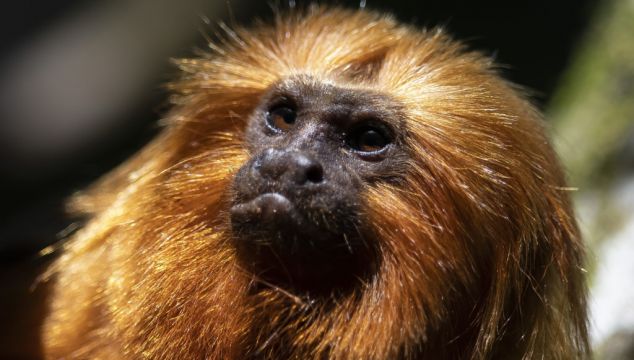Endangered wild monkeys have been vaccinated against yellow fever as part of a campaign to save the threatened species
When yellow fever began to spread in Brazil in 2016, resulting in more than 2,000 human infections and around 750 deaths, it also quickly killed a third of golden lion tamarins, the majority of them in just a few months.
Now scientists have developed a vaccine customised for the endangered simians.
“Vaccinating wild animals for the sake of animals, not to protect humans, is novel,” said Luis Paulo Ferraz, president of the nonprofit Golden Lion Tamarin Association.
The inoculation campaign started in 2021, and already more than 300 tamarins have been vaccinated.

Carlos R Ruiz-Miranda, a conservation biologist at State University of Northern Rio de Janeiro, is among the scientists who have worked for more than three decades to protect the golden lion tamarins, twice going to their rescue when extinction threatened.
He says the vaccinations are the only option left: “Is it too extreme? Give me another alternative.”
Viruses have always flourished in nature. But humans have drastically changed the conditions and impact of how they spread in wildlife.
Epidemics can travel across oceans and borders faster than ever, and species already diminished by habitat loss and other threats are more at risk of being wiped out by outbreaks.
“Human activity is absolutely accelerating disease spread in non-human populations,” said Jeff Sebo, an environmental researcher at New York University, who was not involved in the Brazil project.
Southeastern Brazil was once covered by the rainforest, but today only 12% of it remains. Yet it’s the only place in the world that wild golden lion tamarins live.
After the first lab-confirmed death of a tamarin from the virus in 2018, a census of the monkeys revealed the population of wild tamarins had dropped from around 3,700 to 2,500.
“This epidemic moved very quickly from north to south, across the country – no wildlife does that,” said Mr Ruiz-Miranda.
“It’s people. They cross vast distances in buses, trains, planes. They bring the disease with them.”
Yellow fever is transmitted by mosquitoes, he explained, but highly mobile infected people spread the disease much further and faster than insects alone.
“We realized that in five years, we could lose the entire population if we did nothing” said Mr Ferraz, of the Golden Lion Tamarin Association.

At the time of the yellow fever outbreak, Marcos da Silva Freire was a deputy director of technological development at Brazil’s Oswaldo Cruz Foundation, which oversees vaccine diagnostics and production in the country.
Mr Freire arranged with the Primate Centre of Rio de Janeiro to begin trials of different doses of yellow fever vaccines on about 60 monkeys, close relatives of the tamarins, in January 2018.
A year later, he checked the level of antibodies in their blood. The vaccine appeared to work, without negative side effects. When the team got government approval to begin vaccinating wild monkeys, Mr Freire supervised the first rounds of vaccines.
So far, they’ve vaccinated more than 300 tamarins and detected no adverse side effects. When they have caught and retested monkeys, 90% to 95% have shown immunity – similar to the efficacy of human vaccines.
The outbreak appears to have subsided, and the monitored monkey population has stabilized overall and even increased a little inside the Poço das Antas Biological Reserve.







